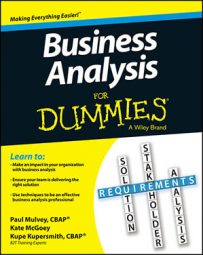Stakeholder needs in the business analysis are similar to business needs in that they also collect and describe information about business goals, strategies, objectives, targets, and key concerns about successes, challenges, issues, risks, and problems.
Whereas business needs describe the needs of the enterprise itself, stakeholder needs describe what a specific stakeholder or stakeholder group needs in order to support the business. (They describe the needs of the stakeholder in service to his own objectives, while participating in initiatives or performing his role, but all in contribution to meeting the enterprise’s business needs.)
Stakeholder needs look very much like business needs and are often mistaken for them. In many respects, stakeholder needs are business needs, which often confuses new business analysts trying to understand definitions and the distinction.
Analysts must ensure that stakeholder needs
Are defined for the distinct and limited perspective of that particular stakeholder or group: If you have a lot of stakeholders to analyze, identify those with similar roles or goals and organize them into representative groups.
![[Credit: Illustration by Wiley, Composition Services Graphics]](https://www.dummies.com/wp-content/uploads/390422.image0.jpg) Credit: Illustration by Wiley, Composition Services Graphics
Credit: Illustration by Wiley, Composition Services GraphicsConvey only the needs relevant to the project and related to the stakeholder’s particular role: That role may be either supporting the relevant business needs or interfacing with the solution being delivered.
Are separated for different stakeholders: Keep the needs of different stakeholders separated in organizing categories. Note: When you’re documenting needs for interaction between stakeholders, capturing the needs of both sides is frequently necessary. However, you must identify the specific needs for each side of the interaction separately to ensure that the solution ultimately meets the needs of each collaborator.
For each individual stakeholder or group you analyze, you should capture the following:
Specific organizational or operational objectives
Any performance targets that either support or are affected by the overarching business needs or goals
Any lower-level goals, activities, or processes that can potentially be served by the solution in question
As you analyze, note specific issues and their root cause(s), as well as any aspirations the stakeholders may have for their own group’s performance or capability-building.
Not all stakeholders are within the business you’re analyzing! Some stakeholders are outside your business (such as customers, vendors, or suppliers). Their needs for the solution may be just as important as the requirements of internal stakeholders, so be sure to look at all the business analysis artifacts at your disposal (such as process diagrams, data flow diagrams, business architecture diagrams, or backlogs) to find and include them.

